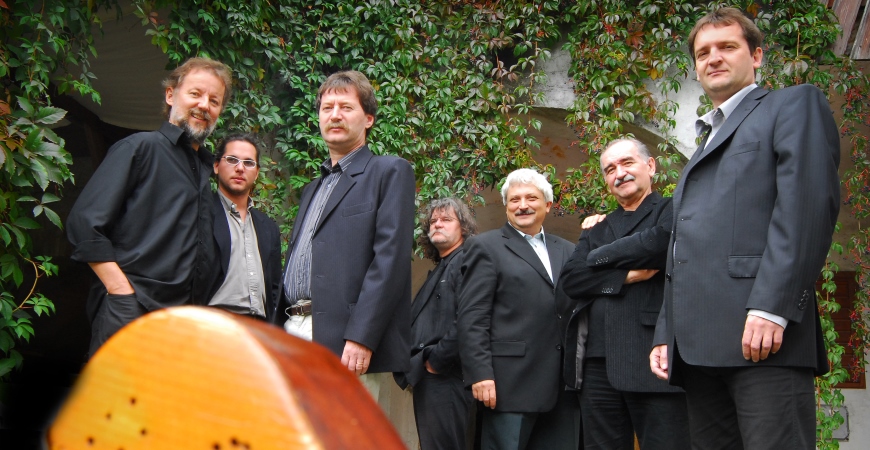The Vujicsics
Not merely an ensemble, the 40-years-old Vujicsics are also a creative and educational workshop. Words by Ferenc Sebő
The Vujicsics Ensemble began their career in 1974 as one of the leading figures of the burgeoning Táncház (dance house) movement, and initially performed a variety of different styles of folk music. Then influenced by Tihamér Vujcsics, they began to concentrate on the Serbian music that was performed in the area where they lived. With this as their starting point, they naturally broadened their interests to Croatian and other Balkan folk musical styles. Since then, the Vujicsics Group have taken the music of the ethnic Serbian and Croatian musicians living in Hungary and now play southern Slavic folk music. The bulk of their repertoire is drawn from the collections of Tihamér Vujicsics, Béla Bartók and their own discoveries. It is mentioned too rarely that the great revival in Hungarian instrumental music that occurred in the 1970s saw musicians interested not just in delineating the traditions within the borders of Hungary: they were also open to relationships outside Hungary between the different areas, ethnic groups and archaic music. Thanks to the Vujicsics Ensemble, the popularity of Balkan music (as the archaic music of Europe) was shared by other Hungarian groups. Some flirt with it, others try to perform it in its original form, but it is still present in one guise or another. Some have worked with it because of its most archaic forms, by which I mean the richness of its asymmetrical rhythms, the myriad variations of bagpipe sonority, the refreshing beauty of the marvellous small-compass melodies.

Vujicsics Ensemble (photo: László Bácsi Róbert)
There is no question, though, that the most popular among these different formations and styles is the music of the tambura groups. What this demonstrates is that only a select group of cognoscenti are interested in the archaic music, and most people equipped with modern ears are more receptive to simple functional polyphony. The tambura was probably introduced to the region by the Turks, which in modern times led to tambura bands, following the examples of Hungarian Gypsy groups. Their popularity remained unchecked. It became fashionable all over Hungary. It is the elegant classical performance of tambura band music that sets Vujcsics apart from other groups. Its members are experienced in a variety of other musical styles (classical music, jazz), creating a unique fusion of popular dance house music and stage production with tautly composed, art-music effects. (It could be argued that the dynamic range is alien to authentic folk music, but who cares when the music makes such an impact: I would argue that it functions as Vujcsics Ensemble's own contemporary music.)
It is relatively rare for a band to be able to work together for forty straight years. It is proof of wondrous human and professional harmony that part of this activity has been to nurture successors and give fatherly support. The Söndörgő group who are poking out their heads from under their gowns are linked by not just family strands but by their spirit and professional sophistication.


